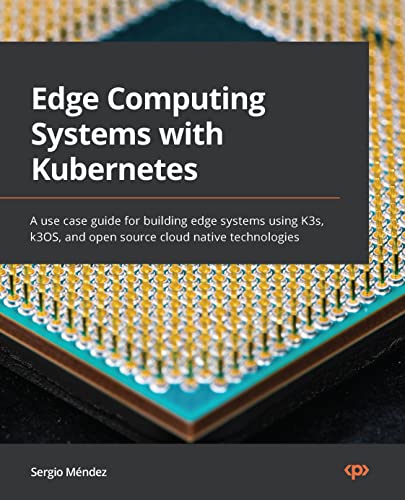

Most ebook files are in PDF format, so you can easily read them using various software such as Foxit Reader or directly on the Google Chrome browser.
Some ebook files are released by publishers in other formats such as .awz, .mobi, .epub, .fb2, etc. You may need to install specific software to read these formats on mobile/PC, such as Calibre.
Please read the tutorial at this link: https://ebookbell.com/faq
We offer FREE conversion to the popular formats you request; however, this may take some time. Therefore, right after payment, please email us, and we will try to provide the service as quickly as possible.
For some exceptional file formats or broken links (if any), please refrain from opening any disputes. Instead, email us first, and we will try to assist within a maximum of 6 hours.
EbookBell Team

5.0
38 reviewsUnderstand how to use K3s and k3OS for different use cases and discover best practices for building an edge computing system
Key Features
A guide to implementing an edge computing environment
Reduce latency and costs for real-time applications running at the edge
Find stable and relevant cloud native open source software to complement your edge environments
Book Description
Edge computing is a way of processing information near the source of data instead of processing it on data centers in the cloud. In this way, edge computing can reduce latency when data is processed, improving the user experience on real-time data visualization for your applications. Using K3s, a light-weight Kubernetes and k3OS, a K3s-based Linux distribution along with other open source cloud native technologies, you can build reliable edge computing systems without spending a lot of money.
In this book, you will learn how to design edge computing systems with containers and edge devices using sensors, GPS modules, WiFi, LoRa communication and so on. You will also get to grips with different use cases and examples covered in this book, how to solve common use cases for edge computing such as updating your applications using GitOps, reading data from sensors and storing it on SQL and NoSQL databases. Later chapters will show you how to connect hardware to your edge clusters, predict using machine learning, and analyze images with computer vision. All the examples and use cases in this book are designed to run on devices using 64-bit ARM processors, using Raspberry Pi devices as an example.
By the end of this book, you will be able to build your own edge computing systems using the content of the chapters as Lego pieces to fit your needs.
What you will learn
Configure k3OS and K3s for development and production scenarios
Package applications into K3s for shipped-node scenarios
Deploy in occasionally connected scenarios, from one node to one million nodes
Manage GitOps for applications across different